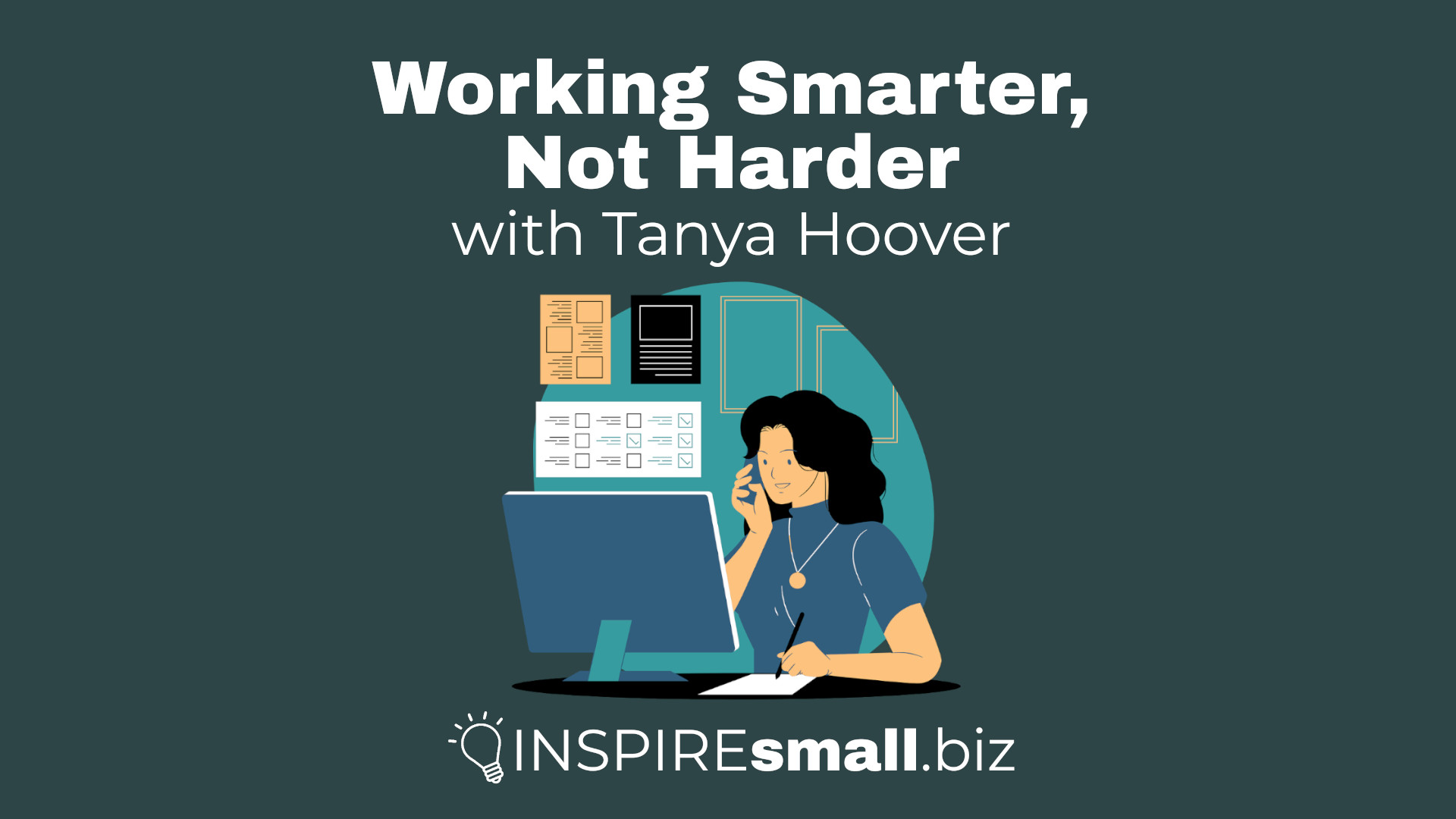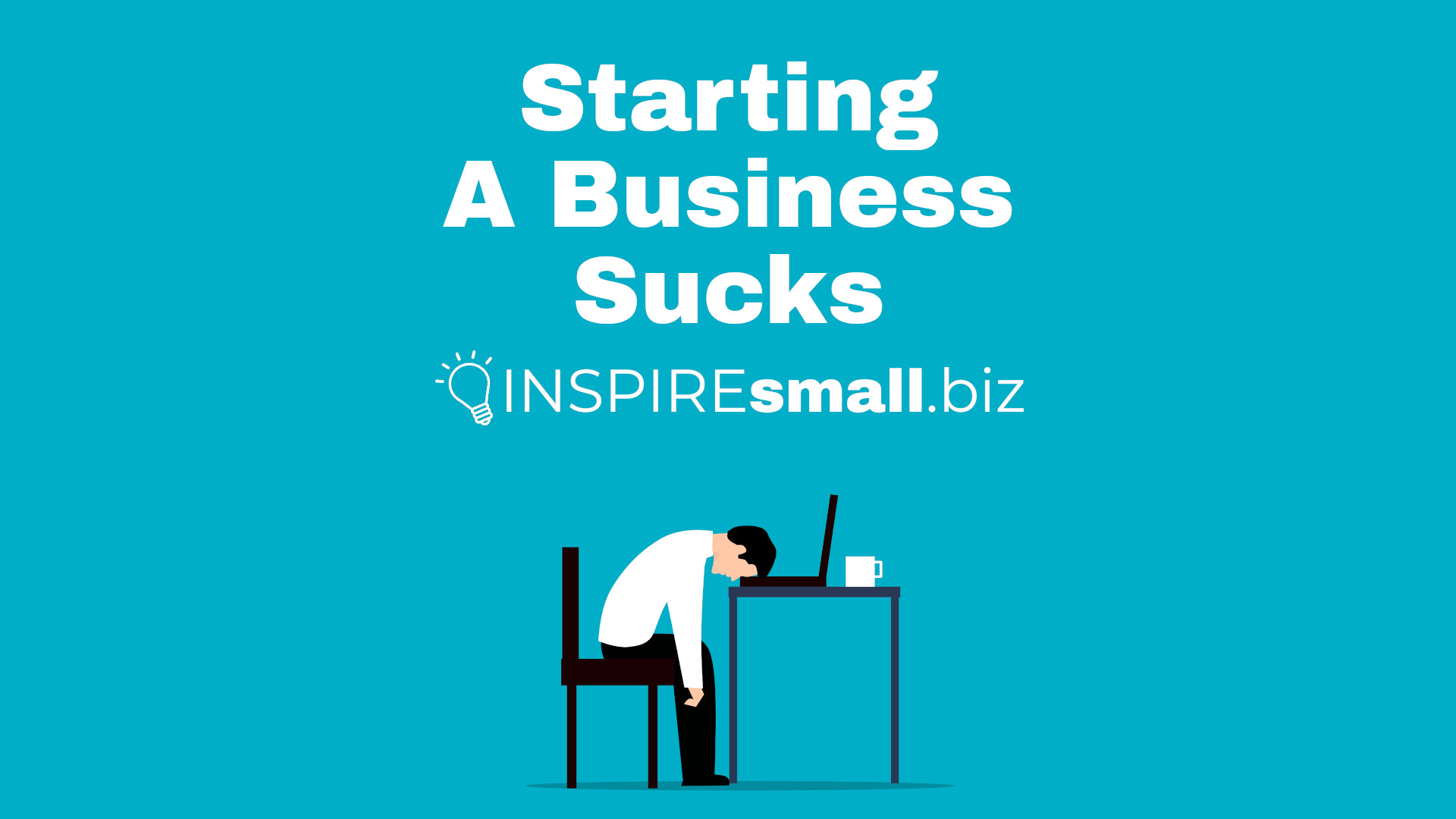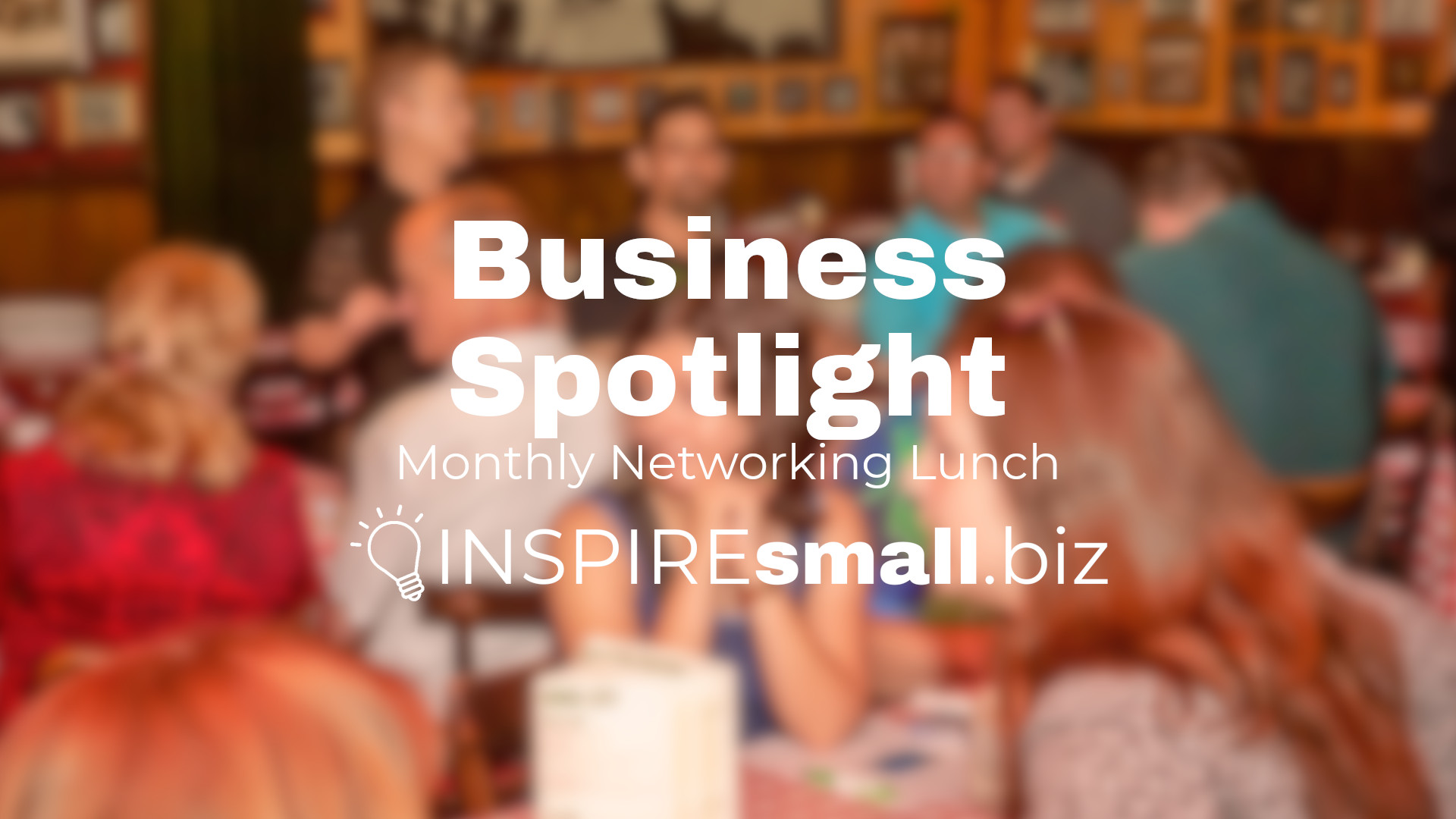Tanya Hoover with Streamline Organizing Service give a presentation on how to Work Smarter, Not Harder
Here is the transcript from the presentation:
Ryan: Second, today I’d like to introduce everyone to Tanya Hoover, who is the owner of Midwest Language Services, and she can help you communicate with clients and prospects pretty much anywhere on the face of the Earth, and that requires a lot of good organization to make sure that you’re able to do all of those things.
Ryan: So today, Tanya is going to talk to us about how to work smarter and not harder.
Ryan: So, everyone, let’s give Tanya a hand.
Tanya: Thank you for that introduction, Ryan. Again, I am the owner of Midwest Language Services.
Tanya: My name is Tanya Hoover and I also own Streamline Organizing Service and I’m able to do that because I’ve learned to manage my time and my priorities so that I have more time to do not only the things that I have to do, but the things that I want to do. Even though we’re in totally different businesses from one another, one thing that we all have in common is that we only have 24 hours a day to get things done.
Tanya: Another thing that we have in common is that each and every one of us is the only one of us that will ever exist. There was never another Ryan Henry. There never will be another one and so forth.
Tanya: So, the time that we have here needs to count. And if you, if we don’t know why we’re here, maybe by managing our time and priorities, we will have time to discover why we’re here and what we need to do.
Tanya: So, today I’m going to share with you my tips and strategies for working smarter, not harder.
Tanya: 1st, I’m going to talk about the importance of having a mission vision and values for your organization.
Tanya: These are not just platitudes to put on your website, because everybody puts a mission statement on their website. But these are things to share with your team and for your, and to your prospective clients.
Tanya: By having a mission, vision, and values statement, you draw people who are aligned with your vision and what you want to do, and so you’re going to attract the kind of employees that you want to have on your team or contractors.
Tanya: And you’re also going to attract clients who want to pick you over, maybe some of your competitors who do something similar. So, what is a mission and how is that different from a vision?
Tanya: Well, a mission is what you do and why you do it.
Tanya: So, here at Midwest Language Services, we believe that the power of clear communication has the potential to help improve lives and we help our clients communicate clearly across languages and culture by providing translation and interpretation services in over 200 languages and English language training to business executives and their families.
Tanya: Your vision is where you see yourself in the future. In the future, you know, where are you headed.
Tanya: So, again, for our vision, it’s to be one of the leading providers of language services in the Midwest.
Tanya: Your values are kind of your guiding principles. OK, what is something that is a non-negotiable for your business?
Tanya: You have to have standards for yourself and your team so they know where the lines are drawn.
Tanya: For us, the part we value, treating our team members and our clients the way we want to be treated. That’s something we value highly.
Tanya: No, this is not something that’s just to be shared during your on boarding process, but this is also to be shared regularly in your meetings and to have posted where other people can access it.
Tanya: This will help build your culture and as I mentioned earlier, draw prospective clients and this will also save your business time and money so you don’t have to micromanage your team.
Tanya: They already know, OK, this is our mission.
Tanya: If I’m doing some activities that are going towards that mission then I’m probably doing the right thing and then your subordinates don’t always have to ask you, is this OK? Is this OK?
Tanya: If it aligns with the mission, it’s OK.
Tanya: Next, I’ll share 2 principles that have opened my eyes about how time management is really about priority management, and I know I’m talking really fast, I think it’s because I want to save time, but also because this is one of my first presentations online, so please forgive me for talking so quickly.
Tanya: So, one of the things you need to do is think about what the most important tasks are. Now. Some of you may have heard of the 80/20 principle.
Tanya: This is also known as the Pareto principle, and what that means is that 80% of the outcomes or results come from 20% of the work. So, if you know what activities your organization does that brings in the money or brings in the clients or whatever your goal is, then make those the things that are on your To Do List, or better yet, instead of having a, a to do list, schedule those things that are the most productive activity things. Ask yourself, OK, is the activity that I’m doing right now helping the business make money or is it contributing to my company’s mission? If so, then it’s probably a part of your 20 percent of activities you need to be doing.
Tanya: Another thing to do is to, well, I, I said there was another principle, so there’s also something that says that, I think it’s Parkinson’s law that says, the time a task will take will expand to the available time that you give it.
Tanya: So, for example, if you eat lunch everyday, which a lot of us do, if you have two hours to eat lunch, it will take you 2 hours to have lunch. But, if you have only 20 minutes, you’ll shove that food down and get it done, so, similarly with your tasks.
Tanya: Make sure you’re not over scheduling the amount of time you need to do something, but make it somewhat reasonable.
Tanya: Now I do believe in having some buffer time so that you don’t paint yourself into a corner, that you have enough time to do the things you need to do, but don’t over schedule.
Tanya: Next, categorize your tasks. There’s something called an Eisenhower matrix that you can look up online later, but basically it’s a, it’s a T chart, sort of, and with four quadrants.
Tanya: One quadrant has important and urgent tasks, so do these. The next quadrant is important but not urgent tasks. These should be scheduled. Otherwise, if you don’t do that, they’ll become urgent tasks.
Tanya: So, if you have a project that’s due a month from now, schedule some time and pace yourself so that you’re not thinking to yourself, Oh no, this is due the day after tomorrow.
Tanya: I don’t have enough time to do this, schedule the things that are not urgent but are important.
Tanya: The third quadrant is urgent, but not important, and this is where either an assistant like a virtual assistant, like two people we have here or someone else on your team can do those tasks for you. Delegate those tasks that are urgent but not important.
Tanya: And if it’s neither urgent nor important, avoid doing these things completely or just do them when you’re taking a break.
Tanya: Next, schedule time to do your tasks. By not doing this, your non-urgent tasks may become more urgent.
Tanya: Also, if you just make a to do list, sometimes those To Do List items never get done and you’ll see them time after time on your To Do List.
Tanya: So, I did, used to be a person, sorry, I used to be a person who had a lot of different post it notes everywhere, trying to remind me to do this and that. I also was a very big list person.
Tanya: Now, I don’t do either of those things, and it’s much easier to keep track of a book that has all of my things that I need to do it in it with a, a date and specific time. If you’re not a paper and pencil person, you can also do it online as well.
Tanya: Up next, batch tasks together by type or location to help prevent fatigue and wasted time that can occur from task switching or spending too much time driving from place to place.
Tanya: Wasting, wasting both gasoline and, uhm, task batching could be maybe doing meal prep on Saturdays for the whole week, so you don’t have to make lunch every day. Or, you know, freeze some of those meals, even though that’s a non-work related task, it does, it can take up your valuable work time.
Tanya: Next, I’m going to talk about some tips to help streamline your day. So, on my team we send internal emails using what I call the 1, 2, 3 method.
Tanya: If something is both urgent and important, I put a one in the subject line next to whatever that detailed description is of what’s in that e-mail. So again, number one is urgent and important.
Tanya: If it has a two in the subject line, that means it’s important but not urgent. So, my internal team members know to check their one, their emails labeled one first and then do their two.
Tanya: If it’s just for their information or for their reference later, it’s not something they have to act upon. I’ll put a 3 in front of it and that’s as far as I get. I don’t want to make it complicated, it’s just 1, 2, 3 and another helpful tip that I use is I think something that a lot of people can use.
Tanya: I don’t know if you have ADHD or whether you’ve been undiagnosed. But if you’re someone who likes to switch between tasks, fooling yourself into thinking, oh I’m a multitasker, but really don’t feel like you’re getting a lot done, use a timer.
Tanya: There are lots of Pomodoro timers online. I think Pomodoro means tomato in Italian, but for some reason they called it that and it’s where you worked in cycles of 25 minutes on, five minutes off, 25 minutes on. Five minutes off, you do 3 rounds of that, and after your three rounds then you give yourself 1/2 hour break or a 15-minute break and you can adjust those as needed. But the typical Pomodoro method is 25 minutes on, five minutes off.
Tanya: Also, start paying attention to when you feel most productive. For most people it’s better to do harder things in the morning, because as the day goes by our willpower kind of wanes and it’s more difficult to do harder tasks later on, when our willpower just isn’t there.
Tanya: Uhm, also for meetings, have an agenda for your meetings and a time limit for each line, line item, send the agenda to attendees at least 24 hours advance, in advance, so that your team members can have time to think about what’s going to be discussed and can brainstorm ideas in advance.
Tanya: Or prepare whatever is necessary to bring to the meeting so that your meetings aren’t just brainstorming sessions, but they’re actually used to make decisions and to work on action items together.
Tanya: Finally, start meetings on time. Starting late teaches people that they don’t need to show up on time, and think about this, if you have five employees that are paid the same hourly rate and you have 12 people on your team who show up five minutes late, you’ve just spent an hour pay for people to show up late.
Tanya: Also, it rewards the latecomers and penalizes the people who do what they’re supposed to do.
Tanya: So, for more helpful tips on how to work smarter and not harder, contact me Tanya Hoover at [redacted] or in the hopefully near future, probably by January, I hope to have a website up, maybe with Ryan. Hope, I’m not sure, called Streamline Organizing Service, where I share more tips on time management and productivity.
Tanya: Thank you.
Ryan: Does anyone have any questions for Tanya?
Amy: I have a question. Now where’d it go? Pareto principle, can you go over that? I was writing while you were talking.
Tanya: Yes, so the Pareto principle states something similar to this, that 80% of the outcomes come from 20% of the inputs, or I’ll just use a simple example of our closet at home. You know, we use, we wear 20% of our clothing 80% of the time, so some of the activities that we do that are just, things that are busywork, aren’t necessarily things that bring us money or will help us towards our long-term vision.
Tanya: So, the Pareto principle is used to think about what’s the most valuable activity that you should be focused on.
Ryan: So, Tanya, what would be a good way to explain to someone how they can classify whether something is important and they should do it, or important and delegate it, or just nix it entirely?
Tanya: OK, if it’s important, it means it’s something that has to be done. If if it’s not done, something bad will happen, there will be a negative consequence, and also if something is important, it’s something that brings revenue to the business or not-for-profit it, or it’s something that helps towards those long-term goals, towards reaching the vision and the mission of the organization.
Tanya: If something is urgent and important, it’s something that should be acted upon right away, if it’s, let’s see, important but not urgent, it could be delegated to a virtual assistant, for example. Did that answer your question or did you have another question as well?
Ryan: No, that answered it. Thank you Tanya.
Tanya: You’re welcome.
Ryan: Does anyone else have any questions for Tanya?
Amy: I do. OK. So, I work with clients and they look to me to kind of pull everything together. Say they’re taking a vacation, moving to a new city, taking a vacation, moving to a new city within the same month.
Amy: That’s me, like, they’re like, they just throw things. They’re just like, here, take, you know. Uhm, what are some good tips for like, someone like me, who wants to set agendas but is just like, so task oriented, like, I’m mostly OK, I’ll just go and get it done.
Amy: Like how to to organize my thoughts to be able to say hey, this is the priority we need to work on this first. You know, if you’re moving to another state, we have to change your drivers license, change your licensing, you know all that stuff, so, what are some good tips for that to be able to set agendas for meetings?
Tanya: Well, one thing that came to mind that, not, isn’t necessarily related to setting your agenda. I would train your clients to use the 1, 2, 3 method for emails, because I imagine you’re getting bombarded by the same people over and over again, depending on you to work on a lot of tasks. So, if you use the urgent, important is a one in the subject line, important, but not urgent is a two, that could save you from making those decisions, and you’re making sure that you’re following the instructions from the person who hired you, and let, put that on them to prioritize what it is, so you don’t have that on your back, and then, once you have that then you can have an agenda that you send them in advance, and say OK, you know, I, I need 20 minutes of your time, the 1st 5 minutes, I need to find out this information. The next 5 minutes I need this, and you know, after the last, there in the last five minutes, you know we’ll talk back and forth. But then I need to go ’cause I have another client.
Tanya: So, if, by setting the agenda, you’re directing the conversation and instead of having a meandering one, by somebody who’s disorganized, who needs a personal, personal assistant.
Tanya: Well also I should say if somebody is just disorganized, that doesn’t, if somebody needs a personal assistant, it doesn’t mean that they’re disorganized, that they need help.
Jeannette: Or, you can create a, uh, if you have the same scenario where somebody is moving, you have, you should have a list of items they need to do, and you can put them in order of their importance.
Jeannette: I prepare taxes and the 2020 tax year was strange with COVID and everything else that was going on. I had people who forgot to bring information with them. One gentleman lives on the far West side of the city. He had about a 40-minute drive and he forgot one of his most important documents.
Jeannette: And it wasn’t something that could be sent e-mail or set through, through a virtual means, so he had to drive back home and reschedule his appointment. So, what I started doing that year, I created a list of all the documents, whether it’s income or expenses, and I mailed that out to everybody, early January, so they have everything.
Jeannette: It’s just a reminder. You need to do this. Had one man, one year, he was new to my practice. I purchased another practice and they’d had a child and he forgot to tell me that he had another child. So, we had to amend their tax return. So, those are the, the things that I’m now including on my list of what you need to bring with you. So, that may be an option for you as well.
Amy: That, that’s ideal. Just having that documentation written down as sort of like an SOP before the meeting.
Amy: Uhm, I know with some clients, I, I’ve moved a client from Connecticut, and we basically, I, I went in just Googled moving timeline and that’s what we did and all of like the important documents that they needed to take care of. You know, drivers license all that stuff, license. Right, so thank you. That’s a good recipe.
Tanya: You may be able to include that on your website. Are you moving? Look at this handy checklist. Are you doing this other thing? Here’s your handy checklist.
Amy: I love to do eBooks for people and basically mark them as free and, and they purchased them and then, Oh well, she’s smart, so, let’s you know, move on to her services. You know, so, eBooks have been ideal for just sending them as gifts to my clients to, oh, you’re, you’re going to on vacation or let’s check this place out and you know, let’s, let’s talk and then it generates the income when they come back and we have meetings.
Ryan: Amy, another quick comment for you to build on that, because I know a lot of organizations have free downloadable material that helps get you into a mailing list funnel. But, if you, if you also have a more comprehensive guide that you would normally work through with your clients, you could make something like that available for purchase through your website, because not everybody may be able to afford the one-to-one, you know, concierge style service you can provide, but they would still pay money for a complete guide, that’s you know, here’s you’re moving to a new state guide about all the things you never may have thought about.
Ryan: It could be more intensive than what you offer for free, but then it just adds another income stream that is completely passive once you’ve put it together.
Amy: That’s a great idea. That’s something that I’m going to have to do a deep dive.
Ryan: Does anyone else have questions, comments, or suggestions for Tanya?
Amy: She’s doing great.
Ryan: Awesome, well, let’s give Tanya a hand for her presentation today.
Tanya: Thank you, thank you Ryan too for the opportunity to speak with this group. I appreciate it.
Ryan: You’re very welcome. Your presentation was excellent. Thank you for joining us to give it today.



